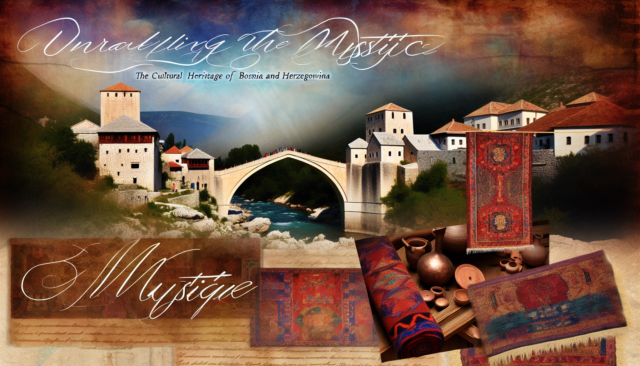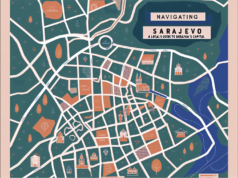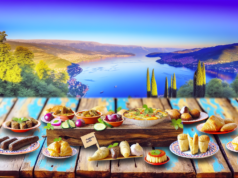
Unraveling the Mystique: The Cultural Heritage of Bosnia and Herzegovina
Nestled in the heart of the Balkans, Bosnia and Herzegovina is a land marked by its intricate tapestry of cultures, histories, and traditions. This captivating country, with its breathtaking landscapes and rich historical legacies, serves as a crossroads of civilizations, where East meets West, and where diverse cultures intermingle. To truly appreciate Bosnia and Herzegovina is to explore its complex cultural heritage—a blend of influences from the Ottoman Empire, Austro-Hungarian rule, and the vivid customs of the native people that define its national identity today.
A Symphony of Historical Influences
The cultural heritage of Bosnia and Herzegovina is largely shaped by its tumultuous history, which is reflected in its architecture, language, and local traditions. The remnants of the Ottoman Empire are visible in the form of mosques, caravanserais, and bridges, with the picturesque Stari Most (Old Bridge) in Mostar standing as a symbol of resilience and unity. Completed in the 16th century, this iconic bridge links two parts of the city, embodying the Ottoman influence while also serving as a testament to the enduring spirit of the Bosnian people.
In contrast, the symbols of Austro-Hungarian rule can be seen in the architectural elegance of Sarajevo, the capital city. Upon walking through its streets, one can encounter grandiose buildings adorned with ornate facades and intricate detailing, showcasing the foreign influence that has left an indelible mark on the country’s cultural landscape. This fusion of styles not only highlights the architectural diversity of Bosnia and Herzegovina but also reflects the multicultural identity of its inhabitants.
Language and Literature: A Melting Pot of Traditions
The linguistic tapestry of Bosnia and Herzegovina is as diverse as its geography, with three official languages—Bosnian, Croatian, and Serbian—reflecting the country’s ethnic complexities. Each language carries with it a plethora of literature, folklore, and oral traditions that have shaped the cultural identity of the nation. Influential writers, such as Ivo Andrić, whose novel "The Bridge on the Drina" won the Nobel Prize in Literature, have drawn inspiration from their surroundings, weaving tales of love, conflict, and the intricate interrelations of different communities.
Through their stories, these writers have preserved the cultural heritage of Bosnia and Herzegovina, capturing the essence of its people and the struggles they have endured. Folk songs and traditional music, too, resonate deeply with the nation’s cultural identity. Sevdalinka, a traditional Bosnian genre, evokes themes of longing and love, often accompanied by the soulful notes of the violin, accordion, and guitar, harmonizing to create a unique musical experience that transcends borders and connects generations.
Festivals: Celebrating Diversity and Unity
One of the most vibrant expressions of Bosnia and Herzegovina’s cultural heritage can be witnessed during its numerous festivals, which draw people from different backgrounds to celebrate shared traditions. The Sarajevo Film Festival, held annually, has become a significant cultural event that showcases regional filmmakers and promotes dialogue between cultures. The festival is not merely a celebration of cinema but also a platform for fostering understanding and cooperation among the diverse ethnic communities of Bosnia and Herzegovina.
Additionally, religious and cultural festivals such as Ramadan, Easter, and Christmas serve as an occasion for mixed communities to come together in solidarity, celebrating their unique customs while acknowledging their common humanity. These gatherings highlight the importance of collective identity and the need for coexistence—a vital aspect as the nation continues to heal from its recent past.
Nature and Culinary Heritage: An Enriching Experience
The natural landscapes of Bosnia and Herzegovina, with their stunning mountains, lush forests, and flowing rivers, also play a vital role in the cultural heritage of the country. The traditional practices of agriculture and grazing reflect a symbiotic relationship between the people and the land, particularly in rural areas where time-honored methods of farming are still upheld.
The culinary heritage of Bosnia and Herzegovina is an extension of its cultural complexity, blending Mediterranean, Middle Eastern, and Central European flavors. Dishes such as cevapi (grilled minced meat), baklava (a sweet pastry), and pita (savory pie) tantalize taste buds while narrating stories of historical migration and exchange. Meals are often shared in a communal setting, underscoring the values of hospitality and familial bonds that are central to Bosnian culture.
Conclusion: A Bright Future Through Cultural Heritage
As Bosnia and Herzegovina continues to navigate its path forward, the significance of preserving its cultural heritage has never been more profound. Embracing its multifaceted identity can serve as a foundation for fostering unity and reconciliation among its people. By unearthing the richness of their shared history and celebrating the myriad of traditions that define them, the nation can find strength in its diversity.
In the age of globalization, where cultural homogenization threatens unique identities, Bosnia and Herzegovina stands as a beacon of resilience—a testament to the beauty of preserving the past while nurturing an inclusive future. Through the lens of its cultural heritage, Bosnia and Herzegovina invites the world to experience its mystique, reminding us all that unity can emerge from diversity.













